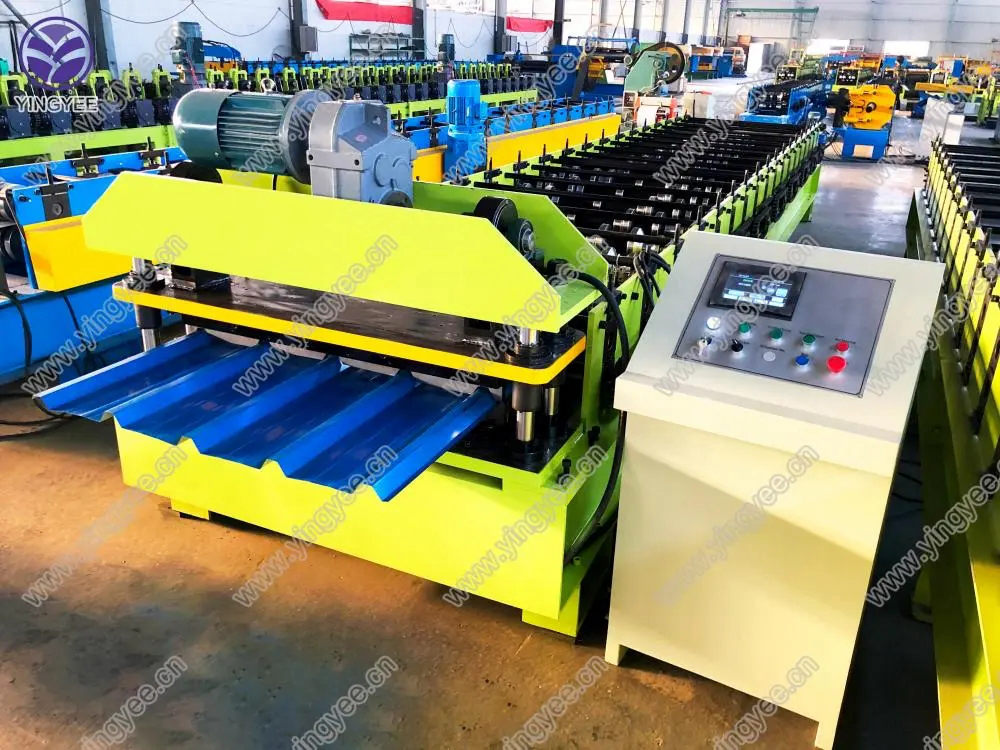Understanding Strut Channel Roll Forming A Comprehensive Guide
Strut channel roll forming is a manufacturing process that involves the continuous shaping of metal sheet material into strut channels. These channels are crucial components in a variety of applications including construction, HVAC (heating, ventilation, and air conditioning), and electrical installations. By understanding the roll forming process and its benefits, businesses can leverage this technology to enhance their production efficiency and product quality.
What is Roll Forming?
Roll forming is a process in which a long strip of metal is passed through a series of rollers that shape it into desired profiles. The machinery employs a sequential die arrangement that gradually forms the strip into its final shape while ensuring the material's integrity. Unlike other forming methods, roll forming is continuous, meaning large volumes of product can be manufactured with consistent quality and precision.
The Strut Channel
A strut channel is a type of structural support used primarily in construction and electrical installations. These channels are made from steel or aluminum and come in various dimensions. Their design typically features a 'U' shape that allows for the easy attachment of hardware, brackets, and other components, making them indispensable in creating frameworks for different systems—ranging from support for electrical conduits to HVAC installations.
The Roll Forming Process for Strut Channels
1. Material Preparation The process begins with the selection of the appropriate metal, typically cold-rolled or hot-rolled steel, depending on the application requirements. Steel is often used due to its strength and durability.
2. Feeding The metal strip is fed into the roll forming machine, where careful tension and alignment are crucial to maintain consistency throughout the forming process.
3. Roll Forming The material passes through a series of rollers that shape it into the strut channel profile. Each set of rollers slightly adjusts the strip's shape until it reaches the final dimensions. Throughout this process, it is essential to monitor for defects and ensure that the material does not warp.
4. Cutting to Length Once the desired shape is achieved, the continuous strips are cut to predetermined lengths. This can be done with mechanical shears or saws, depending on the operational setup.

5. Finishing After cutting, the channels may undergo various finishing processes such as painting, galvanizing, or coating to enhance corrosion resistance and improve aesthetics.
Benefits of Strut Channel Roll Forming
- Efficiency The roll forming process allows for high production rates with minimal waste, which is essential for cost-effective manufacturing. Long runs of consistent products can be achieved quickly.
- Customization Roll forming can produce strut channels in various sizes and shapes to meet specific customer requirements. Adjustments can be made easily in the design phase without significant retooling costs.
- Strength and Durability The materials used in strut channel production, combined with the roll forming process, typically yield products that are more robust than those produced via other methods. This strength is crucial for load-bearing applications.
- Consistency and Precision The continuous process ensures a high level of accuracy in the dimensions and finishing of the products, leading to reduced rejects and higher customer satisfaction.
Applications of Strut Channels
Strut channels are widely used in various industries due to their versatile nature. In construction, they serve as vital components in bracing walls, supporting ceilings, and as framework in roofing systems. In electrical applications, strut channels provide paths for conduit systems, allowing for safe management of electrical wirings. HVAC systems also heavily rely on strut channels for equipment mounting and air duct support.
Conclusion
Strut channel roll forming is an integral process in modern manufacturing, offering significant advantages in efficiency, customization, and product integrity. As industries continue to innovate and seek cost-effective solutions, the demand for roll-formed strut channels will likely grow. Understanding this process equips businesses to harness the benefits of roll forming, contributing to improved manufacturing practices and ultimately better product offerings in the market. Whether you’re an engineer, project manager, or manufacturer, recognizing the significance of strut channels in construction and electrical applications can enhance strategic planning and execution in your projects.